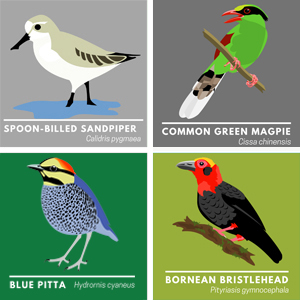
Which birds excite you the most? For many people rarity is a key factor in which birds they enjoy seeing. Of course we all like seeing rare birds but are they really the ones that mean the most to you? Are they the birds that you enjoy watching again and again or are their other factors involved in certain species gaining your affection? For me the birds I enjoy the most, the species that I always love to see, are the ones that have a story or meaning that is special to me. For that reason my favourite birds are seldom the same as those of other birders; Eurasian Oystercatcher is one of these.
Eurasian Oystercatcher (Haematopus ostralegus) is one of those birds that I always enjoy, no matter that it is common in many places, in fact because it is common is one of the reasons I like this bird. I always enjoy seeing large gatherings of Oystercatchers as they flock at high tide roosts and it is amusing to watch them squabbling and interesting to observe them feeding. In fact the feeding behaviour of Oystercatchers is something that a number of ornithologists have studied but anyone who has watched them for even a short time will have noticed that they have a variety of foraging techniques, including probing, picking and prizing. For those who would like to learn more about Oystercatchers with me I have put together some of the best photos I have taken of them, talk about some of their ecology and give some links to ornithological studies on them.
My favourite place to watch Oystercatchers is Shellness in Kent, Southeast England. At all times of the year there are quite large numbers but as the breeding season ends the flock swells to around 2000 birds. This gives me plenty of opportunity to watch what they are doing as well as photograph and video them. This site is isolated and a nature reserve so there is a stretch of beach that is more or less undisturbed by humans. It is very obvious to anyone who visits that it is this area that oystercatchers and other saders choose to roost upon and not the part of the beach half a mile away where people use the beach. Indeed, there are studies that have shown that human disturbance (buildings as well as activity) is important in the roost sites that shorebirds use - Shorebird roost site selection at two temporal scales: is human disturbance a factor?
The video clip below shows a large number of Eurasian Oystercatchers gathering on the mud flats at Shellness and moving towards their high tide roost as the water pushes them inland. Towards the end you will see a short clip of an Oystercatcher foraging.
Oystercatchers and other shorebirds do not enjoy roosting or feeding close to human disturbance, which includes buildings, solar farms, wind farms etc. Please remember that next time your government/local authority wants to build a road or other inappropriate development next to an area that waders use near you.
Oystercatchers often roost in big flocks but sometimes lone birds find themselves away from others and end up in flocks of other waders. Their striking colouration makes then easy to pick out as this photo demonstrates.
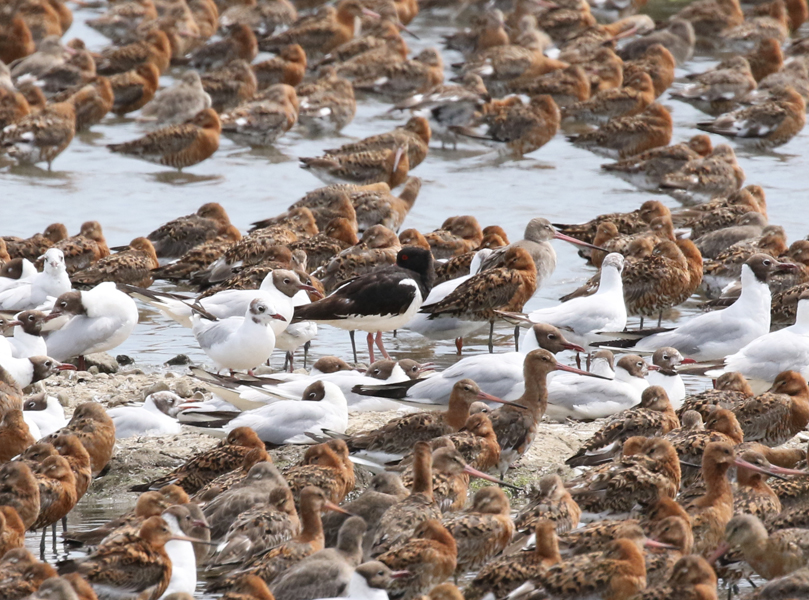 Eurasian Oystercatcher among Black-tailed Godwits & Black-headed Gulls
Eurasian Oystercatcher among Black-tailed Godwits & Black-headed Gulls
What Does an Oystercatcher Eat?
The feeding ecology of Oystercatchers is interesting. Just watch them in action on mud flats, or salt marshes and see what they do. You might be surprised to see that they often have different feeding strategies on different surfaces. Actually that is not so surprising if you think about it. They will pick items of prey off of the surface of stony ground, but perhaps be more likely to probe for food in softer mud.
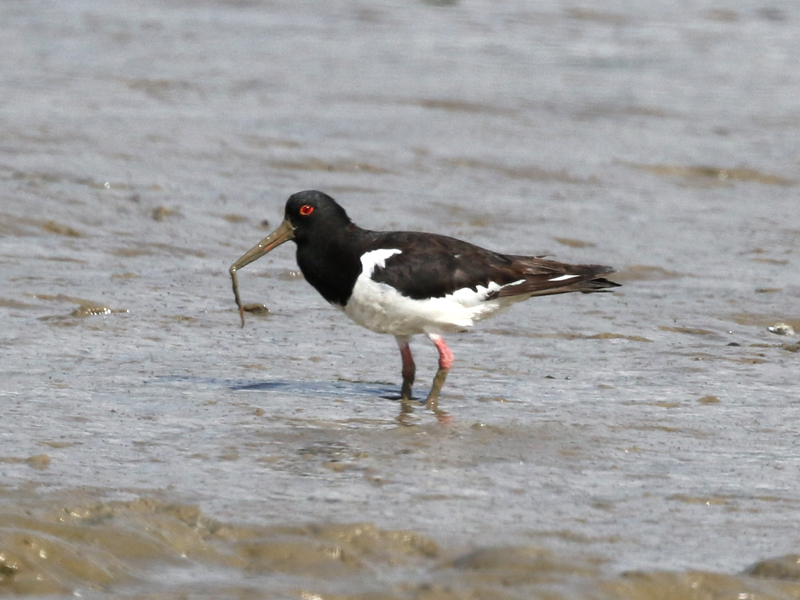 Eurasian Oystercatcher with item of prey
Eurasian Oystercatcher with item of prey
The fact that Oystercatchers can use different foraging techniques on different surface types allows them to use the entire range of exposed mud/shingle/rocks at all phases of the low tide. Some studies have quantified the techniques and success rates on the different areas exposed at low tide and have pointed out that this means that relatively small areas can support quite large numbers of shorebirds. What this means for conservation is that these small areas should not be overlooked in their importance for both migratory and resident shorebirds – Diet and Foraging Behaviour of Oystercatchers and Grey Plovers: The Importance of Intertidal Flats.
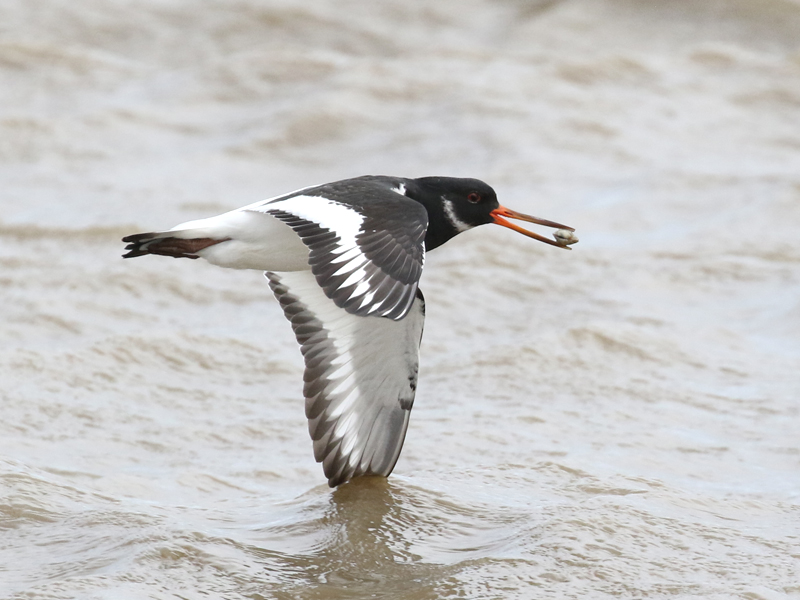 Oystercatcher in flight with prey item
Oystercatcher in flight with prey item
I love the above photograph. It really captures the character of an Oystercatcher in flight, cheekily, away holding a small shellfish. What is it going to do with this hard to deal with item of prey? Well, it perhaps was taking it away to a place where it could attempt to hammer it open or maybe this type of shellfish is its preferred prey and a scarce resource that another bird might steal? If this sounds rather fanciful then this article that suggests Oystercatchers have preferred prey based on its energy rewards is interesting - Foraging behaviour of Oystercatchers specialising on different species of prey - as is this one that suggests that individual Oystercatchers may have different food preferences - Can food specialization by individual Oystercatchers be explained by differences in prey specific handling efficiencies?
It is clear to any wildlife-lover that certain food resources might be scarce and we might well ascribe that to pollution, climate change or some other human device but it would occur to fewer birders that the food source may have been depleted by over-harvesting by the Oystercatchers themselves. That is exactly what this article suggest can happen at times – Prey Depletion and Foraging Strategy in the Oystercatcher Haematopus ostralegus.
Perhaps the most unusual answer to the question, what does an Oystercatcher eat?” is that they have been observed to eat bread. Perhaps they want to make a mussel sandwich? Notes on the foraging behaviour of Eurasian Oystercatchers feeding on bread.
The above photograph shows another Oystercatcher with a prey item that seems to be clamped to the end of the bird’s bill. I have not found any papers that deal with this but it seems like this might be a strategy to expose the creature inside to an environment that weakens it making it eventually drop open and allow it to be consumed. The following photo was taken a short time afterwards when the bird had eaten the shellfish.
One does not need to study Oystercatcher’s ecology to appreciate them, just their striking plumage that contrasts with its bill is enough to light up the day. In my opinion shots of Oystercatcher in flight really accentuate this and is one of the reasons I enjoy getting these types of photos of this attractive bird.
This bird has a metal ring on its leg. Unfortunately I can’t read it but if anyone spots Oystercatchers with leg rings or colour flags they can find out who to report it to on this website – European Colour Ring Birding – Oystercatcher. They do not have leg rings but these birds in flight and their reflections illustrate how attractive Oystercatchers are.
When seen in detail the flight feathers of Oystercatchers are really beautiful as the photograph below shows. I love the way photos like these show all the feathers lay together to build up the flight structure of the wing .
One thing that I find interesting about this species is that it nests in quite a wide variety of situations. I have seen them nesting on shingle beaches and in damp pasture and I was once told a story of a pair nesting on the roof of the manager’s office at one of London’s top football teams. Dipping into Shorebirds, An Identification Guide to Waders of the World it lists saltmarsh, rocky and sandy beaches, sand dunes, along shingle rivers, cereal fields, reservoirs and lakes as well as grassy cliff tops.
If you enjoy reading detailed information about birds then The Oystercatcher, From Individuals to Populations, published by Oxford University press reviews what is know about every aspect of Oystercatcher ecology.
I hope that some readers share my enthusiasm for Oystercatchers but please let me know in the comments section below which birds you really enjoy seeing time after time.


 May 11th, 2020
May 11th, 2020  Nick
Nick 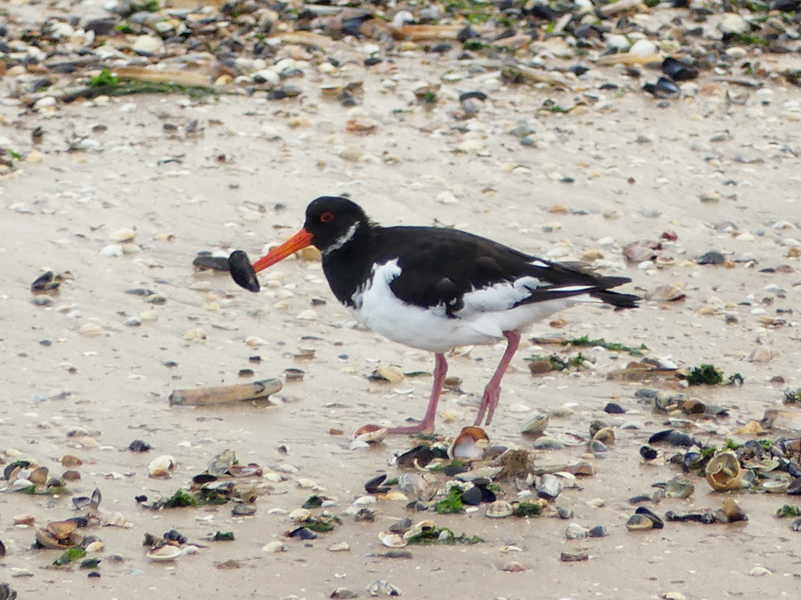
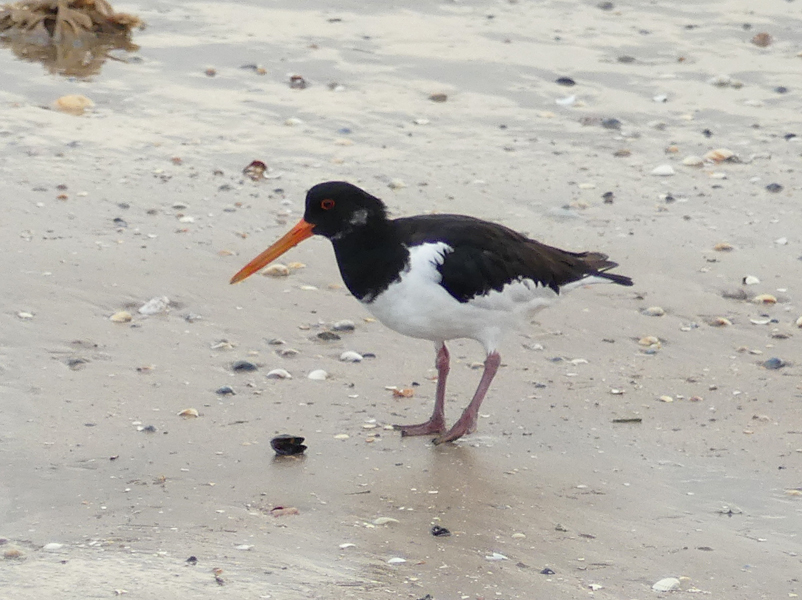
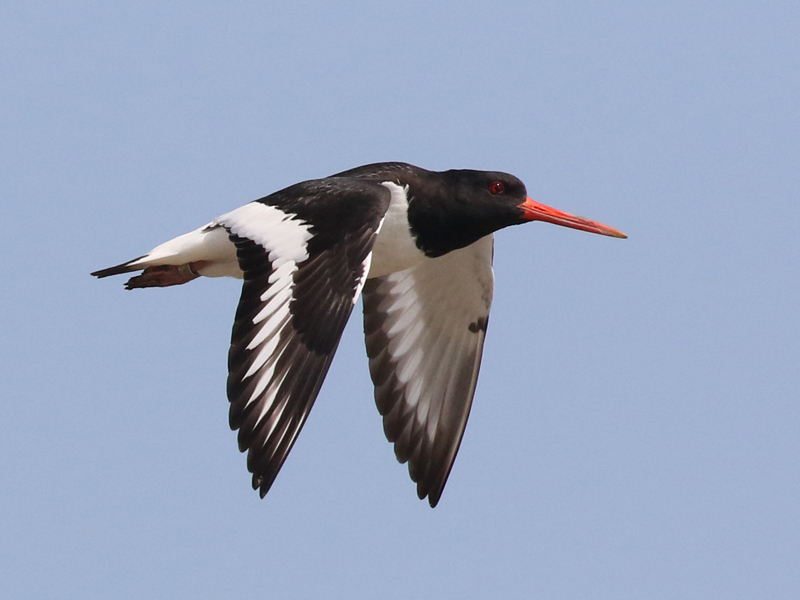
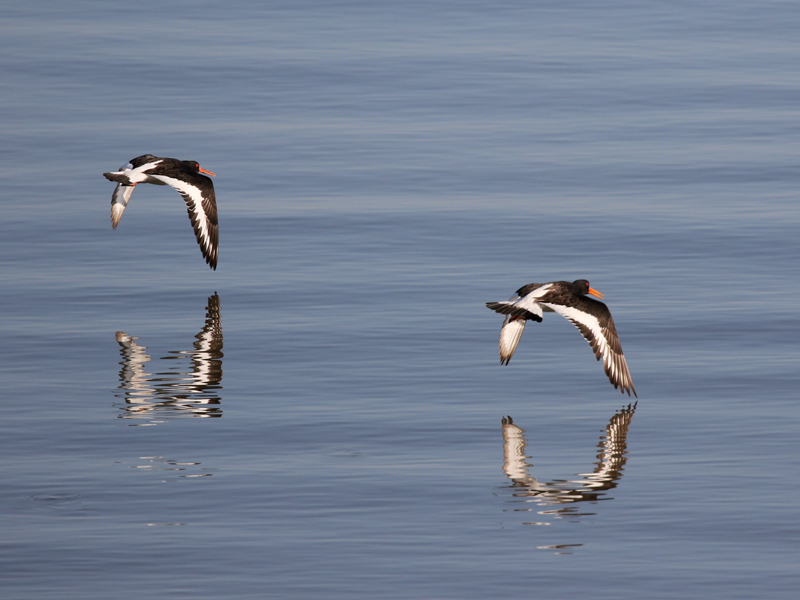
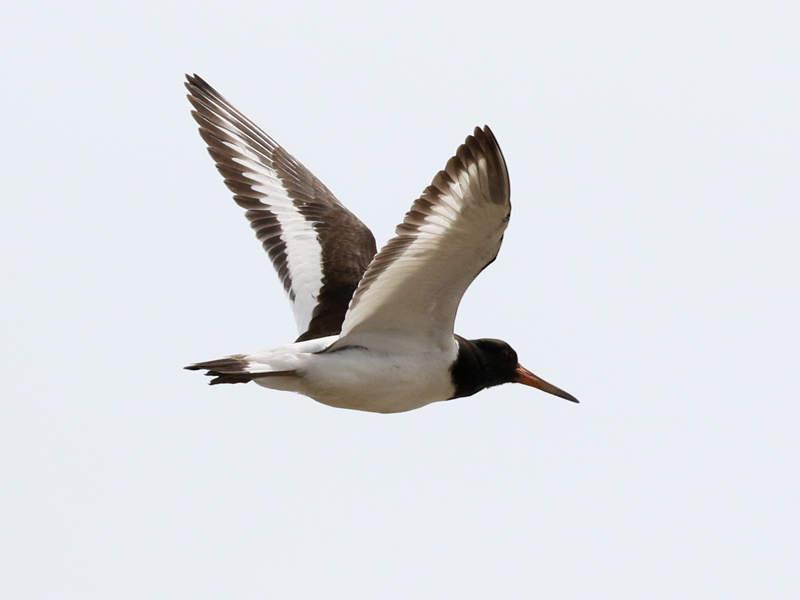
 Posted in
Posted in  Tags:
Tags: 






